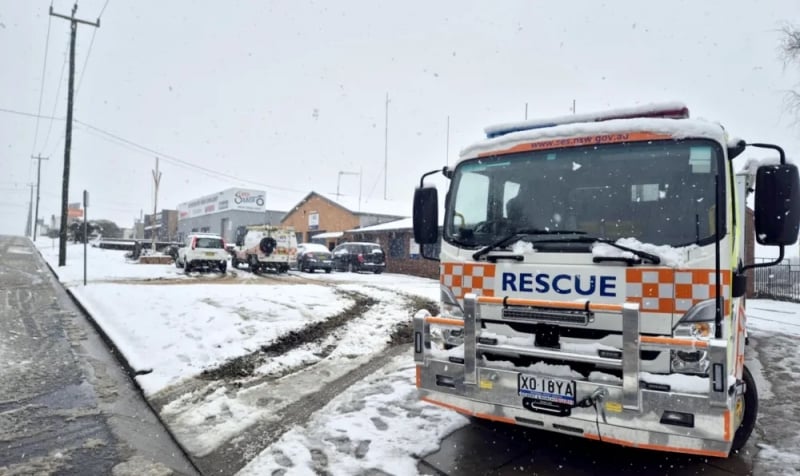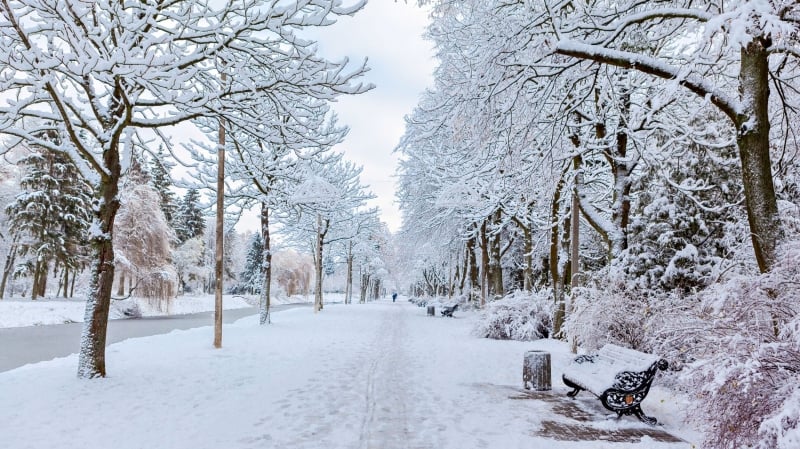Wild weather has brought the thickest layer of snow in decades to several towns in eastern Australia.
On 2 Aug 2025, it snowed in Australia, with some areas receiving their thickest layer since the mid 1980s. For some parts of Queensland, this was the first time in 10 years that they had seen any snow at all.
Also read: How to Rent a Car in Australia: Essential Tips and What to Do in Case of an Accident
Where did the snow fall?
A cold front dropped up to 40 cm (16 inches) of snow in parts of northern New South Wales. It was also the first time the state of Queensland has experienced snowfall in a decade.
Effects of the snowfall

Image credit: NSW SES GOV Official Website
The extreme weather resulted in flooding in some parts and left over 100 vehicles stranded. Several major flood warnings have also been issued. Tens of thousands of homes lost power, and the New South Wales State Emergency Service responded to more than 1,455 incidents. Police have also been searching for a young woman who was swept away by floodwaters.
How unusual was this event
A meteorologist from Australia’s weather bureau described the volume and widespread nature of the snowfall as “unusual,” even in a time when climate change is making the country’s weather more volatile.
This dramatic weather has highlighted the unpredictable nature of Australia’s climate, bringing both a rare spectacle and a series of serious challenges for residents.
Travel safety advice
Although the snowstorm has subsided, travellers are still advised to be prepared for any unforeseen circumstances.

Image credit: Julia Filirovska via Canva Pro
Before you travel
If you’re travelling to or are in the affected areas during this time, check weather updates via the Bureau of Meteorology (BOM) or relevant mobile apps. Also monitor the NSW SES website and the Hazards Near Me app for live alerts. Consult Live Traffic NSW and local council websites for road closures, detours, and safe travel routes.
Be prepared for cold and wintry conditions, even if travelling from warmer parts of Australia. Pack appropriate clothing, snow chains if required, and emergency supplies.
Also read: Road Trips in Australia: Which of these Routes Suit You Best?
During adverse weather
Do not walk, drive, or cycle through floodwater. Even shallow water can conceal dangers such as strong currents, submerged debris, or damaged roads. If you become trapped by rising floodwaters, move to the highest accessible point and call 000 (emergency services). For non-life-threatening storm and flood assistance, contact SES on 132 500.
During thunderstorms, stay indoors, unplug appliances, avoid using landlines, and stay clear of windows and unsecured outdoor items.
Driving & accommodation safety
In areas affected by snow or ice, reduce speed, apply brakes gently, and avoid sudden steering movements. Watch carefully for black ice, which may not be visible even in daylight. If staying in affected regions, ensure your accommodation is equipped for cold weather. Wrap exposed pipes, maintain reliable heating, and keep a backup kit in case of power cuts or travel disruption.




